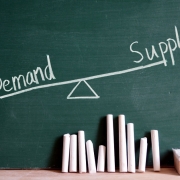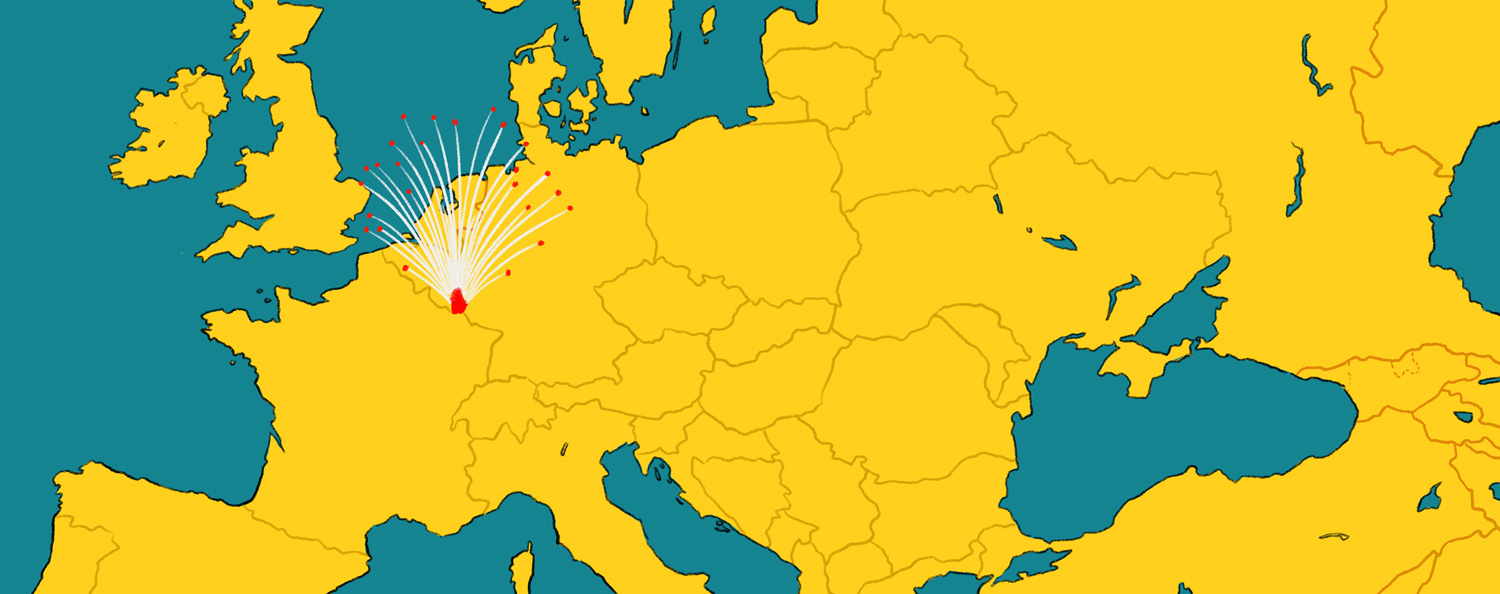IT Sustainability Supports Enterprise-Wide Efforts
Raytheon integrates corporate sustainability to achieve savings and recognition
By Brian J. Moore
With a history of innovation spanning 92 years, Raytheon Company provides state-of-the-art electronics, mission systems integration, and other capabilities in the areas of sensing, effects, command, control, communications, and intelligence systems, as well as a broad range of mission support services in defense, civil government, and cybersecurity markets throughout the world (see Figure 1). Raytheon employs some of the world’s leading rocket scientists and more than 30,000 engineers and technologists, including over 2,000 employees focused on IT.

Figure 1. Among Raytheon’s many national defense-oriented product and solutions are sensors, radar, and other data collection systems that can be deployed as part of global analysis and aviation.
Not surprisingly, Raytheon depends a great deal on information technology (IT) as an essential enabler of its operations and as an important component of many of its products and services. Raytheon also operates a number of data centers, which support internal operations and the company’s products and services, which make up the bulk of Raytheon’s enterprise operations.
In 2010, Raytheon established an enterprise-wide IT sustainability program that gained the support of senior leadership. The program increased the company’s IT energy efficiency, which generated cost savings, contributed to the company’s sustainability goals, and enhanced the company’s reputation. Raytheon believes that its success demonstrates that IT sustainability makes sense even in companies in which IT is important, but not the central focus. Raytheon, after all, is a product and services company like many enterprises and not a hyper scale Internet company. As a result, the story of how Raytheon came to develop and then execute its IT sustainability strategy should be relevant to companies in a wide range of industries and having a variety of business models (see Figure 2).
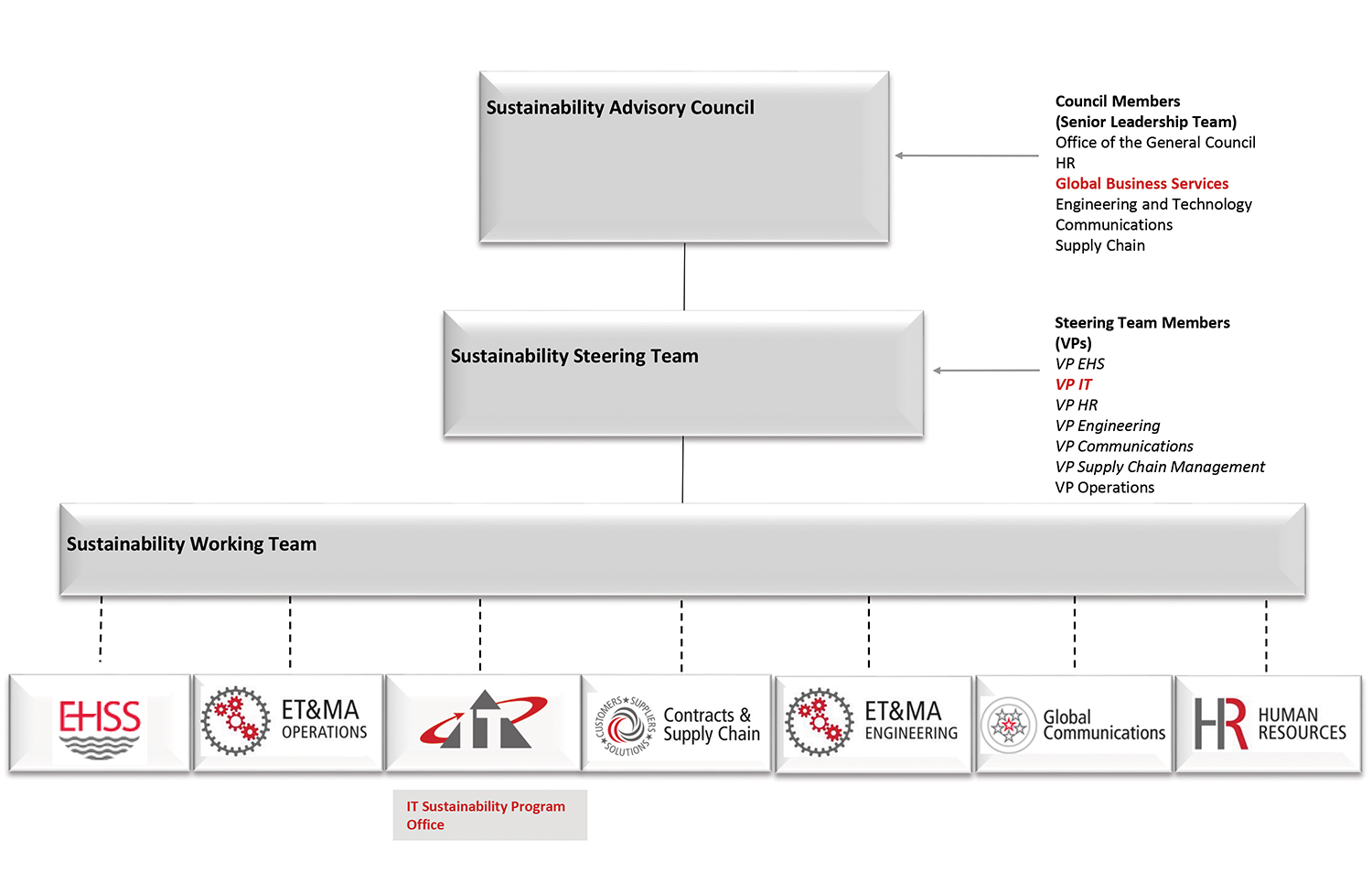
Figure 2. Raytheon’s enterprise-wide sustainability program includes IT and its IT Sustainability Program and gives them both visibility at the company’s most senior levels.
Over the last five years the program has reduced IT power by more than 3 megawatts (MW), including 530 kilowatts (kW) in 2015. The program has also generated over US$33 million in annual cost savings, and developed processes to ensure the 100% eco-responsible management of e-waste (see Figure 3). In addition IT has developed strong working relationships related to energy management with Facilities and other functions; their combined efforts are achieving company-level sustainability goals, and IT sustainability has become an important element of the company’s culture.

Figure 3. Each year, IT sustainability efforts build upon successes of previous years. By 2015, Raytheon had identified and achieved almost 3 megawatts of IT savings.
THE IT SUSTAINABILITY OFFICE
Raytheon is proud to be among the first companies to recognize the importance of environmental sustainability, with U.S. Environmental Protection Agency (EPA) recognitions dating back to the early 1980s.
As a result, Raytheon’s IT groups across the company employed numerous people who were interested in energy savings. On their own, they began to apply techniques such as virtualization and optimizing data center airflows to save energy. Soon after its founding, Raytheon’s IT Sustainability (initially Green IT) Office, began aggregating the results of the company’s efficiencies. As a result, Raytheon saw the cumulative impact of these individual efforts and supported the Office’s efforts to do even more work.
The IT Sustainability Office coordinates a core team with representatives from the IT organizations of each of the company’s business units and a few members from Facilities. The IT Sustainability Office has a formal reporting relationship with Raytheon’s Sustainability Steering Team and connectivity with peers in other functions. Its first order of business was to develop a strategic approach to IT sustainability. The IT Sustainability Office adopted the classic military model in which developing strategy means defining the initiative’s ends, ways, and means.
Raytheon chartered the IT Sustainability Office to:
• Develop a strategic approach that defines the program’s ends, ways, and means
• Coordinate IT sustainability efforts across the lines of business and regions of the company
• Facilitate knowledge sharing and drive adoption of best practices
• Ensure alignment with senior leadership and establish and maintain connections with sustainability efforts in other functions
• Capture and communicate metrics and other results
COMMUNICATING ACROSS BUSINESS FUNCTIONS
IT energy savings tend to pay for themselves (see Figure 4), but even so, getting a persistent, comprehensive effort to achieve energy savings requires establishing a strong understanding of why energy savings are important and communicating it company wide. A strong why is needed to overcome barriers common to most organizations:
• Everyone is busy and must deal with competing priorities. Front-line data center personnel have no end of problems to resolve or improvements they would like to make, and executives know they can only focus on a limited number of goals.
• Working together across businesses and functions requires getting people out of their day-to-day rhythms and taking time to understand and be understood by others. It also requires giving up some preferred approaches for the sake of a common approach that will have the benefit of scale and integration.
• Perserverence in the face of inevitable set backs requires a deep sense of purpose and a North Star to guide continued efforts.

Figure 4. Raytheon believes that sustainability programs tend to pay for themselves, as in this hypothetical in which adjusting floor tiles and fans improved energy efficiency with no capital expenditure.
The IT Sustainability Office’s first steps were to define the ends of its efforts and to understand how its work could support larger company goals. The Sustainability Office quickly discovered that Raytheon had a very mature energy program with annual goals that its efforts would directly support. The Sustainability Office also learned about the company’s longstanding environmental sustainability program, which the EPA’s Climate Leaders program regularly recognized for its greenhouse gas reductions. The Sustainability Office’s work would support company goals in this area as well. Members of the IT Sustainability Office also learned about the positive connection between sustainability and other company objectives, including growth, employee engagement, increased innovation, and improved employee recruiting and retention.
As the full picture came into focus, the IT Sustainability Office came to understand that IT energy efficiency could have a big effect on the company’s bottom line. Consolidating a server would not only save energy by eliminating its power draw but also by reducing cooling requirements and eliminating lease charges, operational labor charges, and data center space requirements. IT staff realized that their virtualization and consolidation efforts could help Raytheon avoid building a new data center and also that their use of simple airflow optimization techniques had made it possible to avoid investments in new cooling capacity.
Having established the program’s why, the IT Sustainability Office began to define the what. It established three strategic intents:
• Operate IT as sustainably as possible
• Partner with other functions to create sustainability across the company
• Build a culture of sustainability
Of the three, the primary focus has been operating IT more sustainably. In 2010, Raytheon set 15 public sustainability goals to be accomplished by 2015. Raytheon’s Board of Directors regularly reviewed progress towards these goals. Of these, IT owned two:
1. Generate 1 MW of power savings in data centers
2. Ensure that 100% of all electronic waste is managed eco-responsibly.
IT met both of these goals and far exceeded its 1 MW power savings goal, generating just over 3 MW of power savings during this period. In addition, IT contributed to achieving several of the other company-wide goals. For example, reductions in IT power helped the company meet its goal of reducing greenhouse gas emissions. But the company’s use of IT systems also helped in less obvious ways, such as supporting efforts to manage the company’s use of substances of concern and conflict minerals in its processes and products.
This level of executive commitment became a great tool for gaining attention across the company. As IT began to achieve success with energy reductions, the IT Sustainability Office also began to establish clear tie-ins with more tactical goals, such as enabling the business to avoid building more data centers by increasing efficiencies and freeing up real estate by consolidating data centers.
The plan to partner with other functions grew from the realization that Facilities could help IT with data center energy use because a rapidly growing set of sensing, database, and analytics technologies presented a great opportunity to increase efficiencies across all of the company’s operations. Building a culture of sustainability in IT and across the company ensured that sustainability gains would increase dramatically as more employees became aware of the goals and contributed to reaching them. The IT Sustainability Office soon realized that being part of the sustainability program would be a significant motivator and source of job satisfaction for many employees.
Raytheon set new public goals for 2020. Instead of having its own energy goals, IT, Facilities, and others will work to reduce energy use by 10% more and greenhouse gas emissions an additional 12%. The company also wants to utilize 5% renewable energy. However, IT will however continue to own two public goals:
1. Deploy advanced energy management at 100% of the enterprise data centers
2. Deploy a next-generation collaboration environment across the company
THE MEANS
To execute projects such as airflow managements or virtualization that support broader objectives, the IT Sustainability Office makes use of commercially available technologies, Raytheon’s primary IT suppliers, and Raytheon’s cultural/structural resources. Most, if not all, these resources exist in most large enterprises.
Server and storage virtualization products provide the largest energy savings from a technology perspective. However, obtaining virtualization savings requires physical servers to host the virtual servers and storage and modern data center capacity to host the physical servers and storage devices. Successes achieved by the IT Sustainability Office encouraged the company leadership to upgrade infrastructure and the internal cloud computing environment necessary to support the energy-saving consolidation efforts.
The IT Sustainability Office also made use of standard data center airflow management tools such as blanking panels and worked with Facilities to deploy wireless airflow and temperature monitoring to eliminate hotspots without investing in more equipment.
In addition to hardware and software, the IT Sustainability Office leveraged the expertise of Raytheon’s IT suppliers. For example, Raytheon’s primary network supplier provided on-site consulting to help safely increase the temperature set points in network gear rooms. In addition, Raytheon is currently leveraging the expertise of its data center service provider to incorporate advanced server energy management analytics into the company’s environments.
Like all companies, Raytheon also has cultural and organizational assets that are specific to it, including:
• Governance structures that include the sustainability governance model and operating structures with IT facilitate coordination across business groups and the central IT function.
• Raytheon’s Global Communications and Advance Media Services organizations provide professional expertise for getting the company’s message out both internally and externally.
• The cultural values embedded in Raytheon’s vision, “One global team creating trusted, innovative solutions to make the world a safer place,” enable the IT Sustainability Office to get enthusiastic support from anywhere in the company when it needs it.
• An internal social media platform has enabled the IT Sustainability Office to create the “Raytheon Sustainability Community” that has nearly 1,000 self-subscribed members who discuss issues ranging from suggestions for site-specific improvements, to company strategy, to the application of solar power in their homes.
• Raytheon Six Sigma is “our disciplined, knowledge-based approach designed to increase productivity, grow the business, enhance customer satisfaction, and build a customer culture that embraces all of these goals.” Because nearly all the company’s employees have achieved one or more levels of qualification in Six Sigma, Raytheon can quickly form teams to address newly identified opportunities to reduce energy-related waste.
Raytheon’s culture of sustainability pays dividends in multiple ways. The engagement of staff outside of the IT infrastructure and operations function directly benefits IT sustainability goals. For example it is now common for non-IT engineers who work on programs supporting external customers to reach back to IT to help ensure that best practices are implemented for data center design or operation. In addition, other employees use the company’s internal social media platform to get help in establishing power settings or other appropriate means to put the computers in an energy savings mode when they notice wasteful energy use.The Facilities staff has also become very conscious of energy use in computer rooms and data closets and now know how to reach out when they notice a facility that seems to be over-cooled or otherwise running inefficiently. Finally employees now take the initiative to ensure that end-of-life electronics and consumables such as toner or batteries are disposed of properly.
There are also benefits beyond IT energy use. For many employees, the chance to engage with the company’s sustainability program and interact with like-minded individuals across the company is a major plus in their job satisfaction and sense of pride in working for the company. Human Resources values this result so much that it highlight’s Raytheon’s sustainability programs and culture in its recruiting efforts.
Running a sustainability program like this, over time also requires close attention to governance. In addition to having a cross-company IT Sustainability Office, Raytheon formally includes sustainability at each of the three levels of the company sustainability governance model (see Figure 5). A council with membership drawn from senior company leadership provides overall direction and maintains the connection; a steering team comprising functional vice-presidents meets quarterly to track progress, set goals, and make occasional course corrections; and the working team level is where the IT Sustainability Office connects with peer functions and company leadership. This enterprise governance model initially grew out of an early partnership between IT and Facilities that had been formed to address data center energy issues.
Reaching out across the enterprise, the IT Sustainability Office includes representatives from each business unit who meet regularly to share knowledge, capture and report metrics, and work common issues. This structure enabled Raytheon to build a company-wide community of practice, which enabled it to sustain progress over multiple years and across the entire enterprise.
At first, the IT Sustainability Office included key contacts within each line of business who formed a working team that established and reported metrics, identified and shared best practices, and championed the program within their business. Later, facility engineers and more IT staff would be added to the working team, so that it became the basis for a larger community of practice that would meet occasionally to discuss particular topics or engage a broader group in a project. Guest speakers and the company’s internal social media platform are used to maintain the vitality of this team.
As a result of this evolution, the IT Sustainability Office eventually established partnership relationships with Facilities; Environment, Health and Safety; Supply Chain; Human Resources; and Communications at both the corporate and business levels. These partnerships enabled Raytheon to build energy and virtualization reviews into its formal software development methodology. This makes the software more likely to run in an energy-efficient manner and also easier for internal and external customers to use the software in a virtualized environment.
THE WAYS
The fundamental ways of reducing IT energy use are well known:
• Virtualizing servers and storage allows individual systems to support multiple applications or images, making greater use of the full capabilities of the IT equipment and executing more workloads in less space with less energy
• Identifying and decommissioning servers that are not performing useful work has immediate benefits that become significant when aggregated
• Optimizing airflows, temperature set points, and other aspects of data center facility operations often have very quick paybacks
• Data center consolidation, moving from more, older, less-efficient facilities to fewer, higher efficiency data centers typically reduces energy use and operating costs while also increasing reliability and business resilience
After establishing the ends and the ways, the next step was getting started. Raytheon’s IT Sustainability Office found that establishing goals that aligned with those of leadership was a way to establish credibility at all levels across the company, which was critical to developing initial momentum. Setting targets, however, was not enough to maintain this credibility. The IT Sustainability Office found it necessary to persistently apply best practices at scale across multiple sectors of the company. As a result, IT Sustainability Office devised means to measure, track, and report progress against the goals. The metrics had to be meaningful and realistic, but also practical.
In some cases, measuring energy savings is a straightforward task. When facility engineers are engaged in enhancing the power and cooling efficiency of a single data center, their analyses typically include a fairly precise estimate of expected power savings. In most cases the scale of the work will justify installing meters to gather the needed data. It is also possible to do a precise engineering analysis of the energy savings that come from rehosting a major enterprise resource planning (ERP) environment or a large storage array.
On the other hand, it is much harder to get a precise measurement for each physical server that is eliminated or virtualized at enterprise scale. Though it is generally easy to get power usage for any one server, it is usually not cost effective to measure and capture this information for hundreds or thousands of servers having varying configurations and diverse workloads, especially when the servers operate in data centers of varying configurations and efficiencies.
The IT Sustainability Office instead developed a standard energy savings factor that could be used to provide a valid estimate of power savings when applied to the number of servers taken out of operation. To establish the factor, the IT Sustainability Office did a one-time study of the most common servers in the company’s Facilities and developed a conservative consensus on the net energy savings that result from replacing them with a virtual server.
The factor multiplies an average net plug savings of 300 watts (W) by a Power Usage Effectiveness (PUE) of 2.0, which was both an industry average at that time and a decent estimate of the average across Raytheon’s portfolio of data centers. Though in many cases actual plug power savings exceed 300 W, having a conservative number that could be easily applied allowed for effective metric collection and for communicating the value being achieved. The team also developed a similar factor for cost savings, which took into account hardware lease expense and annual operating costs. These factors, while not precise, were conservative and sufficient to report tens of millions of dollars in cost savings to senior management, and were used thoughout the five-year long pursuit of the company’s 2015 sustainability goal. To reflect current technology and environmental factors, these energy and cost savings factors are being updated in conjunction with setting new goals.
EXTERNAL RECOGNITION
The IT Sustainability Office also saw that external recognition helps build and maintain momentum for the sustainability program. For example, in 2015 Raytheon won a Brill Award for Energy Efficiency from Uptime Institute. In previous years, Raytheon received awards from Computerworld, InfoWorld, Homeland Security Today, and e-stewards. In addition, Raytheon’s CIO appeared on a CNBC People and Planet feature and was recognized by Forrester and ICEX for creating an industry benchmark.
Internal stakeholders, including senior leadership, noted this recognition. The awards increased their awareness of the program and how it was reducing costs, supporting company sustainability goals, and contributing to building the company’s brand. When Raytheon’s CEO mentioned the program and the two awards it won that year at a recent annual shareholders meeting, the program instantly gained credibility.
In addition to IT-specific awards, the IT Sustainability Office’s efforts to partner led it to support company-level efforts to gain recognition for the company’s other sustainability efforts, including providing content each year for Raytheon’s Corporate Responsibility Report and for its application for the EPA Climate Partnership Award. This partnership strategy leads the team to work closely with other functions on internal communications and training efforts.
For instance, the IT Sustainability Office developed one of the six modules in the company’s Sustainability Star program, which recognizes employee efforts and familiarizes them with company sustainability initiatives. The team also regularly provides content for intranet-based news stories, supports campaigns related to Earth Day and Raytheon’s Energy Month, and hosts the Raytheon Sustainabilty Community.
Brian J. Moore is senior principal information systems technologist in the Raytheon Company’s Information Technology (IT) organization in Global Business Services. The Raytheon Company, with 2015 sales of $23 billion and 61,000 employees worldwide, is a technology and innovation leader specializing in defense, security, and civil markets throughout the world. Raytheon is headquartered in Waltham, MA. The Raytheon IT Sustainability Office, which Moore leads, focuses on making IT operations as sustainable as possible, partnering with other functions to leverage IT to make their business processes more sustainable, and creating a culture of sustainability. Since he initiated this program in 2008, it has won six industry awards, including, most recently, the 2015 Brill Award for IT Energy Efficiency from Uptime Institute. Moore was also instrumental in creating Raytheon’s sustainability governance model and in setting the company’s public sustainability goals.


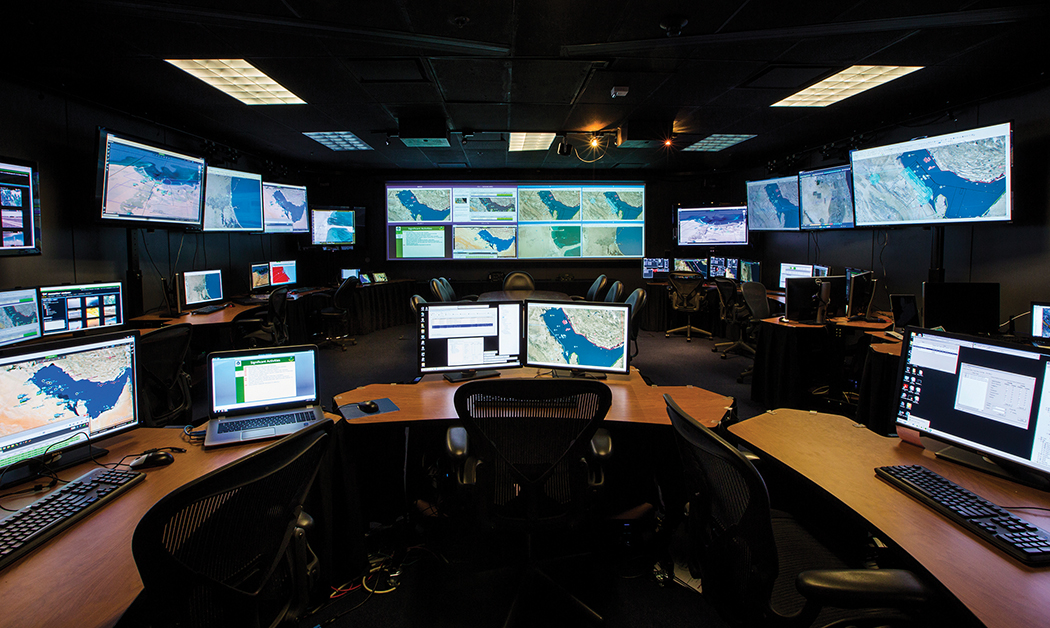
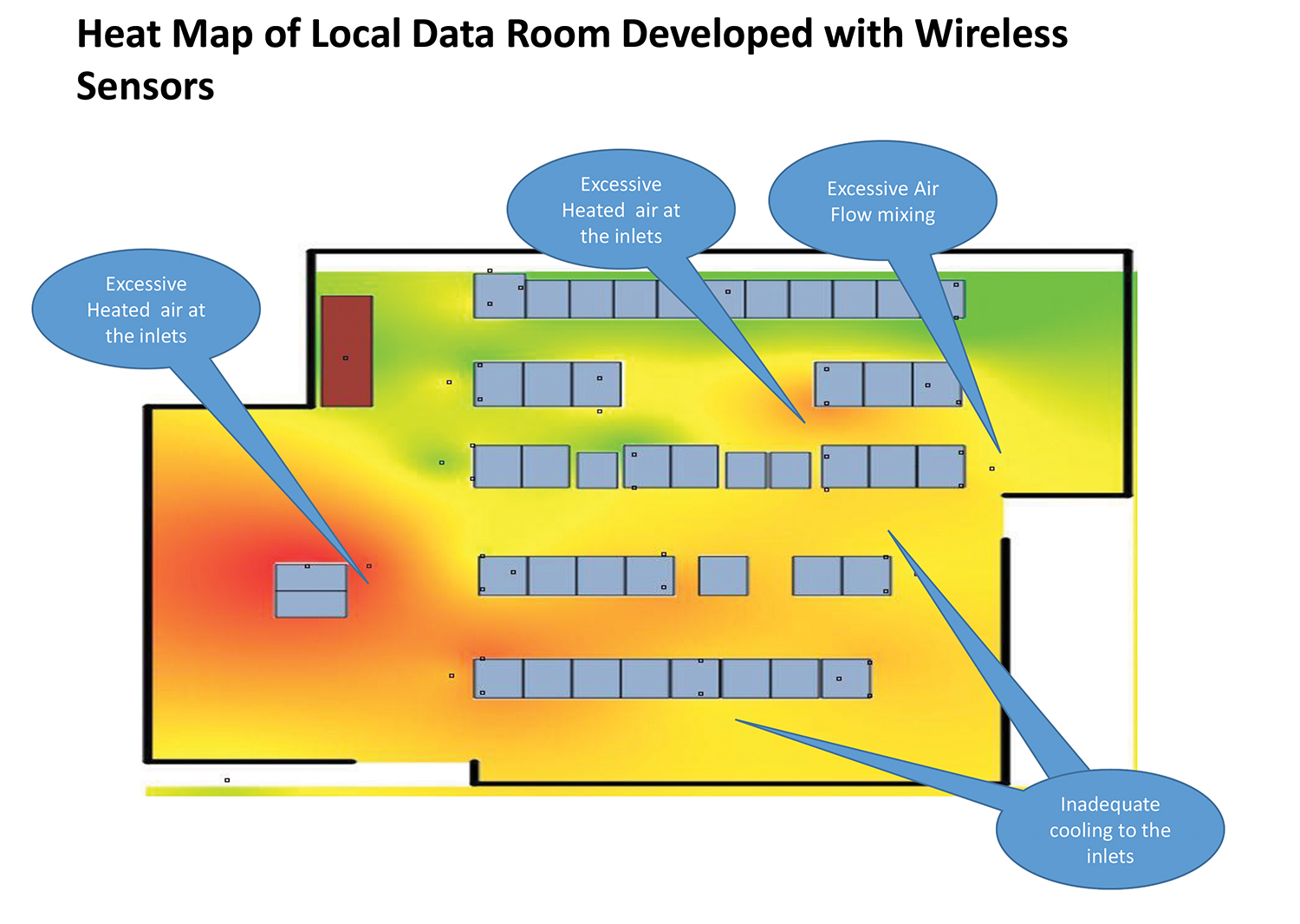


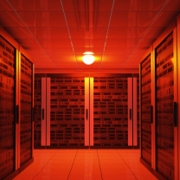 Uptime Institute, 2019
Uptime Institute, 2019
 Uptime Institute, 2019
Uptime Institute, 2019


